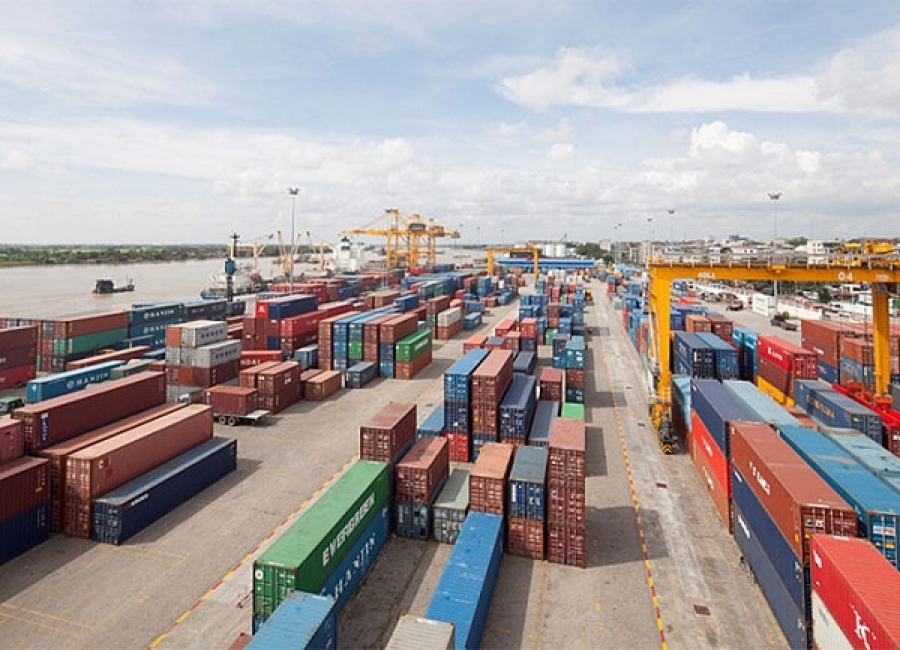World Bank report projected the Myanmar’s economy outlook positive pending reform acceleration
20 มิถุนายน 2562
growth in the industrial sector is expected to recover in the 2018-19 fiscal year after a slowdown during the Transition Period due to strong growth in garment exports.
The construction sector is reported by the World Bank as also showing signs of a mild recovery due to the start of many new infrastructure projects. The construction output is estimated to increase from 7.9 percent in the 2017-18 fiscal year to 8.2 percent in the 2018-19 fiscal year due to improved transport infrastructure and new real estate and commercial development activities including industrial zones and affordable housing projects.
Increasing activity in the retail and wholesale sector will support a positive performance in the service sector, growing to 8.3 percent in the 2018-19 fiscal year compared to 8.2 percent in the previous fiscal year, according to the report.
However, growth in the agriculture sector will decrease to 1.2 percent from 1.3 percent due to a reduced external demand for agricultural products.
Current account deficit
The World Bank said that Myanmar’s current account deficit has narrowed due to improved trade, and foreign direct investment (FDI) commitments picking up slightly in the first half of 2018-19 fiscal year, however these remain just one-third of the 2017-18 level.
Myanmar’s trade deficit turned to a surplus between July 2018 and September 2018 (Transition Period 2), for the first time since 2014-15, reflecting stronger exports and declining imports, according to the report.
The report says the trade balance returned to a deficit in the first quarter of the 2018-19 fiscal year due to the steady decline in natural gas exports and the first quarterly decline in garment exports in a year, probably driven by seasonal factors.
Import growth moderated due to declining consumption and investment imports while demand for intermediate goods imports remained robust in line with increased manufacturing activity, according to the report.
FDI commitments began to pick up slightly in the first half of the fiscal year compared to the same period last year but they remain a third of the annual FDI commitments seen in 2017-18.
Inflation
The report said core inflation has remained stable. Inflation decreased to 6.1 percent in January 2019 from a peak of 8.8 percent in October 2018 as the exchange rate stabilized and fuel prices fell.
However, due to high fuel prices and rising food prices, inflation rose again to 7.9 percent by the end of the second quarter of the 2018-19 fiscal year.
Meanwhile, core inflation, excluding volatile food and energy prices, stayed at around 6.5 percent in the first and second quarters of 2018-19, suggesting a stable underlying price trend.
Financial inclusion
Despite banking sector credit growth remaining calm, financial inclusion in Myanmar is improving, according to the report. Credit growth continued to slow in the 2018-19 fiscal year as banks sought to comply with important prudential regulations.
The report said, growth in credit to the private sector was 20 percent in first quarter of 2018-19, which rose to 21 percent during Transition Period 2.
While overall credit growth is slowing, there are signs of progress in financial access for small and medium-sized enterprises (SMEs).
In first quarter of the 2018-19 fiscal year, SME credit grew by 80 percent (year-on-year). Microfinance institutions have also been expanding rapidly albeit from a low base, the report said. As of January 2019, 5 million clients had received microfinance loans, with loans reaching approximately 1.3 trillion kyats in first quarter of 2018-19, up from 800 billion kyats in the same period last year.
Budget deficit
During the 2018-19 fiscal year, the budget deficit is projected to be considerably lower than the target of 5.4 percent of GDP, driven by expenditure under-execution.
The report indicates actual spending was nearly 20 percent less than the half-year spending target, with capital spending just above half (55.2 percent execution) of the half-year target for the fiscal year.
Despite overall spending execution challenges, electricity subsidy spending continued to increase, placing pressure on the budget. The World Bank estimates additional energy subsidy payments could rise to 6 percent of total government expenditure in the 2019-20 fiscal year and to 11 percent in the 2021-22 fiscal year.
Power sector
Included as a special topic, the report addressed Myanmar’s power shortage issue. The World Bank suggested that Myanmar needs to invest twice as much and implement projects three times faster to meet growing demand in the power sector.
By the World Bank estimates, electricity consumption will grow at an average annual rate of 11 percent until 2030. Peak demand is expected to reach 8.6 gigawatts (GW) by 2025 and 12.6 GW by 2030, which is a significant increase from the current level of 3.6 GW. To provide demand, Myanmar will need an estimated $2 billion in investment per year, which is double past levels.
Myanmar will need 5 GW of new generation capacity by 2025 which is equivalent to roughly three times what was built over the same period in the past.
Editor’s note: Myanmar’s government changed the fiscal period from April 1 to March 31 in 2017-18 to October 1 to Sept. 30 in 2018-19. The interim period between April and October 2018 is referred to as the Transition Period and is divided into two sections, Transition Period 1 (April to June 2018) and Transition Period 2 (July to September 2018).
(The Irrawaddy: https://www.irrawaddy.com/business/economy/world-banks-economic-outlook-myanmar-6-points.html )











